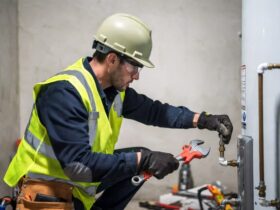No products in the cart.
Health Tips to Help You Overcome Addiction Problem

Addiction problem is a complex but treatable disease that affects a person’s brain and behavior. Drugs alter the structure and function of the brain, leading to changes that persist long after drug abuse has stopped.
This may explain why addicts are at risk for relapse even after long periods of abstinence, despite knowledge of the potentially devastating consequences of drugs.
There is no one-size-fits-all treatment approach. There are more of them. And in the rest of the text, we have presented several practical health tips that can help you overcome your addiction problem, so continue reading in order to find out.
Diagnostics
The diagnosis is the first and most crucial phase of addiction treatment. This phase aims to assess the stage of addiction, the level of physical and mental health of the patient, the presence of consequences of drug use, the degree of motivation, criticality towards one’s behavior, and the preservation of voluntary mechanisms.
Based on the diagnostic results, a treatment plan is made. The length of treatment and the choice of methods of detoxification, psycho-correction, blockade, and rehabilitation depends on the results of the diagnosis.
A standard diagnostic examination includes the following:
- tests for hepatitis B and C, HIV infection
- general blood analysis
- biochemical blood test (assessment of liver, kidney, and pancreas function)
- EKG
- examination by an internist.
Detoxication
Detoxication is a complex of measures aimed at cleaning the body of substances and overcoming the withdrawal syndrome (crisis, withdrawal syndrome).
The type of detoxication for the organism is selected individually based on the analysis of several important factors:
- Substance
- Doses, level of tolerance, frequency of drug use during the day.
- Length of continuous use
- Way of use
- State of health and presence of concomitant diseases.
- Patient compliance, motivation, voluntary mechanisms.
There are two types of detox: sub-acute and acute detox.
Sub-acute detox is designed for those undergoing recovery but with less severe withdrawal symptoms than those needing a complete detoxication process. It is common for sub-acute detoxication to occur with less medical supervision in an outpatient setting such as a residential detox facility, urgent care center, or doctor’s office. Acute detox is for those with severe addiction and more intense or life-threatening withdrawal symptoms. This type of detox has higher risks of life-threatening side effects, seizures, and respiratory failure. The treatment, therefore, must be monitored 24/7 by a clinician at an inpatient facility.
Treatment of Psychological Addiction – Psychocorrection
There are several stages in the process of drug withdrawal. Due to the absence of narcotics, the body reacts first, and the physical crisis is sometimes very painful. But when it finally passes, then the psychological need becomes stronger. That is why a person who has just endured all the pain is ready to take substances again. That is why the most essential thing in treatment is to extinguish that desire, that mania, and restore the person’s control over themselves.
It is necessary that the power of medical influence destroy the drug addict’s instincts. For this purpose, the effects of drugs, devices, and information are combined. With the help of medication, the patient is brought to a state where the psyche is more receptive to receiving new information and there is less censorship by the drug-addicted, pathological side of the personality.
Outpatient Treatment – Resocialization and Reintegration
After discharge from the hospital, the treatment continues at home, and this is the phase of preserving the results. The main goal of this phase is to return to a normal rhythm of life, to feel pleasure from playing sports, communicating with friends and relatives, building a career, and developing in a social and spiritual sense.
This phase usually lasts 12 months. It foresees regular monthly check-ups and compliance with treatment rules.
- Mandatory employment (job or studies)
- Prohibited use of psychoactive substances
- The use of benzodiazepines and other addictive drugs is prohibited
- Prohibited contacts with persons who use narcotics, sale of narcotics, visiting places where narcotics are used
- Regular check-ups, taking therapy
- Exercises with a special pedagogue
As we know, polynarcomania, i.e., addiction problem to multiple psychoactive substances, is extremely dangerous and leaves disastrous consequences for the life and health of the consumer. Although the above data seems discouraging, the situation is not hopeless at all. On the contrary, polynarcomania is curable.
Compliance with all the rules of outpatient treatment is a guarantee of success and peace in your family. “He is a new man, a completely different person; now I recognize my child.” – that’s what relatives often say at check-ups. You will be glad to make resolutions and see the result of your work.















Leave a Reply